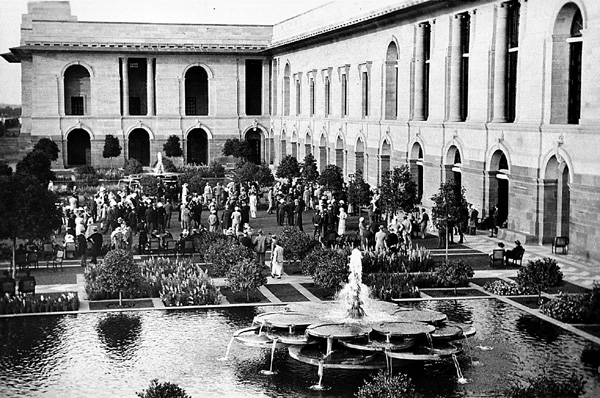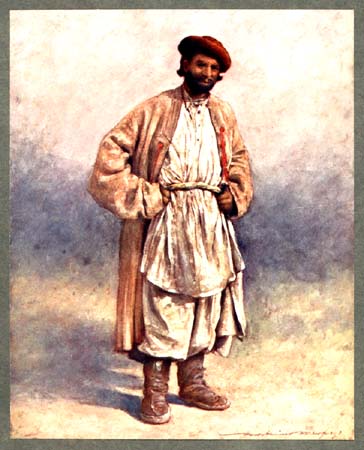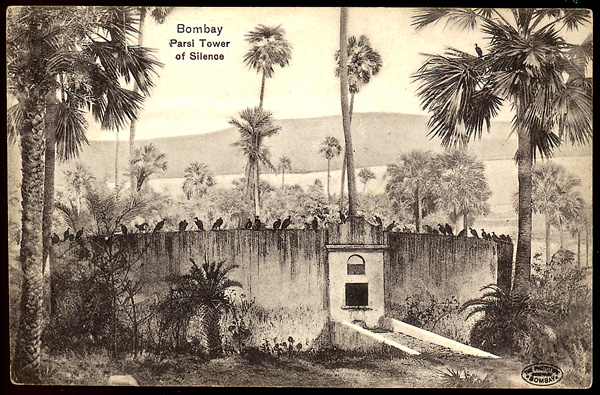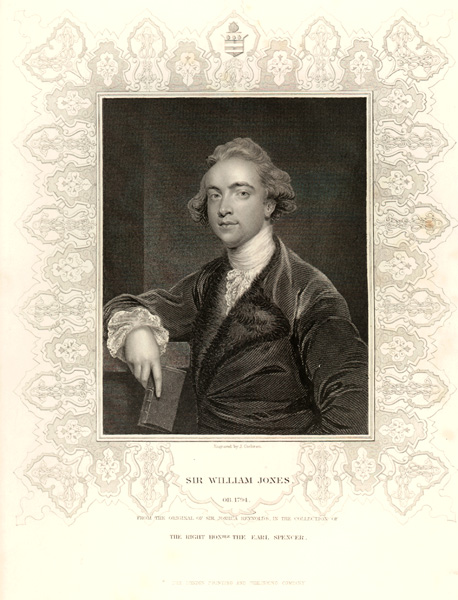|
"India to me, it was primitive, interesting, and I'm like Kipling:
'East is East and West is West, and ne'er the twain will meet.'
And I lived there twenty-eight years."
-Kate Garrod, whose husband was an engineer in the Indian Public Works Department |
Never the Twain? Indo-British RelationsThe nature of relations between the British and Indians changed over time, as did British attitudes toward India and Indians. In earlier days some Britons assimilated readily to Oriental ways of life or even intermarried with Indians. Particularly after the traumatic uprising of 1857-58, however, relations were often strained, as conventional ideas about European racial superiority became more prominent and as Victorian notions of morality and evangelical movements to convert the world to a particular kind of Christianity became influential. By the latter part of the 19th century, for example, the idea of a "respectable" English person marrying an Indian was virtually unthinkable. Of course, the very fact that the British were by definition a ruling elite and Indians -- however rich or important -- a subject people often strained relations. This could exacerbate cultural misunderstandings, a situation which is the focus of E.M. Forster's great anti-imperial novel, A Passage to India.Those who remembered their time in India were aware that the Indo-British relationship was often problematic. They felt, for example, that a certain need to be impartial outsiders in the administration of Indian matters sometimes made them seem aloof. Yet they insisted that they frequently had cordial relations with Indians and were in close contact with many aspects of Indian life and society. They spoke Indian languages and, if touring a district, might interact with no one but Indians for weeks or months at a time. As time went on there was also increasing emphasis on Indianization of the various British services, so that more Indians came to have responsible positions that made them officially equal or even superior to Englishmen in the administrative systems.  Garden party with British and
Indian guests at the Viceroy's Palace, New Delhi; photograph courtesy
of Brigadier Richard Gardiner; 1930s.
Garden party with British and
Indian guests at the Viceroy's Palace, New Delhi; photograph courtesy
of Brigadier Richard Gardiner; 1930s.
 Indian man with Englishwomen at a fete to aid the Indian Red Cross;
photograph courtesy of Major General Sir Charles and Lady Dalton; 1930s.
Indian man with Englishwomen at a fete to aid the Indian Red Cross;
photograph courtesy of Major General Sir Charles and Lady Dalton; 1930s.
Constraints in social relations sometimes meant that Britons interacted with Indians mostly in formal or superficial situations.  "A Hindu Hill Shepherd of Kashmir," color illustration (from a
watercolor original) by Mortimer Menpe7s in his The People of India
(London: Adam and Charles Black, 1910).
"A Hindu Hill Shepherd of Kashmir," color illustration (from a
watercolor original) by Mortimer Menpe7s in his The People of India
(London: Adam and Charles Black, 1910).
In their taped recollections Britons spoke with particular affection of encounters with Indian peasants and other common folk. Of course there was no question of peasants claiming social equality with European sahibs, so they in no way impinged on British dominance and could even be romanticized. On the other hand, interviewees suggested they had limited intercourse with educated, middle class Indians -- who increasingly challenged British rule as time went on -- and some indicated ambivalence about or suspicion toward such people.  British and Indian guests
of a maharajah, dining in a tent; photograph courtesy of the Centre of
South Asian Studies, University of Cambridge; early 20th century.
British and Indian guests
of a maharajah, dining in a tent; photograph courtesy of the Centre of
South Asian Studies, University of Cambridge; early 20th century.
Socializing with Indian princes was a high point of life in India according to many recollections. Connections to this world of royalty could validate British status.  "The Folly of Worshipping Cobras Cut in Stone," photographic
illustration in Across India at the Dawn of the 20th Century, by Lucy E.
Guinness (London: Religious Tract Society, 1898).
"The Folly of Worshipping Cobras Cut in Stone," photographic
illustration in Across India at the Dawn of the 20th Century, by Lucy E.
Guinness (London: Religious Tract Society, 1898).
British attitudes toward Indian culture were complex. A few English people became devoted students of it, some had little interest in or were even appalled by it, others took a selective interest. Guinness's travel account was meant to champion the work of Christian missionaries and thus to denigrate Indian "paganism". However, in general interest in Indian customs sometimes focussed on those which were disquieting to Europeans. There was considerable fascination with the practice of "suttee," the immolation of widows on the funeral pyres of their husbands, a practice finally outlawed. And there were many accounts of the Jaganath procession, in which the Hindu deity was pulled on a cart by devotees, some of whom were crushed beneath it in an excess of religious fervor. Such customs could serve to suggest fanaticism, social instability, and the continuing need for British rule to control such excesses.  "Sutteeism on the Banks of the Ganges --
Preparing for the Immolation of a
Hindoo Widow," steel engraving by J. Hedway from a drawing by Captain
Grindlay in The Indian Empire: Its History, Topography, Government,
Finance, Commerce, and Staple Products, by R. Montgomery Martin, 5 vols.
(London: London Printing and Publishing Co., 1879-81?).
"Sutteeism on the Banks of the Ganges --
Preparing for the Immolation of a
Hindoo Widow," steel engraving by J. Hedway from a drawing by Captain
Grindlay in The Indian Empire: Its History, Topography, Government,
Finance, Commerce, and Staple Products, by R. Montgomery Martin, 5 vols.
(London: London Printing and Publishing Co., 1879-81?).



"The Burning Ghat -- Calcutta"; postcard (Calcutta: Art Union), early 20th century; "The Burning Ghat, Benares"; postcard (London: Raphael Tuck and Sons), 20th century; "Bombay Parsi Tower of Silence"; postcard (Bombay: Phototype Co.), early 20th century. "Exotic," and to Europeans perhaps horrifying, Indian modes of disposing of the dead -- such as the Hindu practice of public immolation and the Parsi custom of exposing the bodies to be eaten by birds -- intrigued the British.  "Devotees in India Sacrificing Themselves to the Idol Juggernaut";
wood engraving; 19th century.
"Devotees in India Sacrificing Themselves to the Idol Juggernaut";
wood engraving; 19th century.

"Festival of Al-Mohurram"; steel engraving by F.W. Topham after a drawing by H. Melville; 19th century. Though recorded because they seemed colorful, images of sectarian festivals were also reminders that these customs could provoke violence between Hindus and Muslims and that British rule staved off intercommunal chaos.  Old Deccan Days; or, Hindoo Fairy Legends, Current in
South India, by Mary Frere, 2nd edition (London: John Murray, 1870).
First published in 1868, this pioneering collection of oral tales is indicative of the interest taken by some English people in Indian culture through folklore. Frere was the daughter of a Governor of Bombay.
Old Deccan Days; or, Hindoo Fairy Legends, Current in
South India, by Mary Frere, 2nd edition (London: John Murray, 1870).
First published in 1868, this pioneering collection of oral tales is indicative of the interest taken by some English people in Indian culture through folklore. Frere was the daughter of a Governor of Bombay.
 Europeans visiting a complex of Hindu temples;
lithograph by Prince Waldemar of Prussia; 1853, later hand coloring. Indian architectural splendors attracted British and other Western
visitors. Prince Waldemar, a talented amateur artist, was one of a number of distinguished Europeans who visited British India for sightseeing or sport.
Europeans visiting a complex of Hindu temples;
lithograph by Prince Waldemar of Prussia; 1853, later hand coloring. Indian architectural splendors attracted British and other Western
visitors. Prince Waldemar, a talented amateur artist, was one of a number of distinguished Europeans who visited British India for sightseeing or sport.
 "Sir William Jones";
steel engraving after a painting by Sir Joshua Reynolds; 19th century.
Jones (1746-1794) made noted contributions to the study of Sanskrit
and ancient Indian law.
"Sir William Jones";
steel engraving after a painting by Sir Joshua Reynolds; 19th century.
Jones (1746-1794) made noted contributions to the study of Sanskrit
and ancient Indian law.
An Introduction Acknowledgements Acknowledgements 1. The Passage to India | interviews 2. Running Your Empire | interviews 3. Life in the Bungalows | interviews 4. Imperial Diversions | interviews 5. Never the Twain? | interviews 6. No More India to Go to | interviews |
Back to top of page | Back to Exhibitions